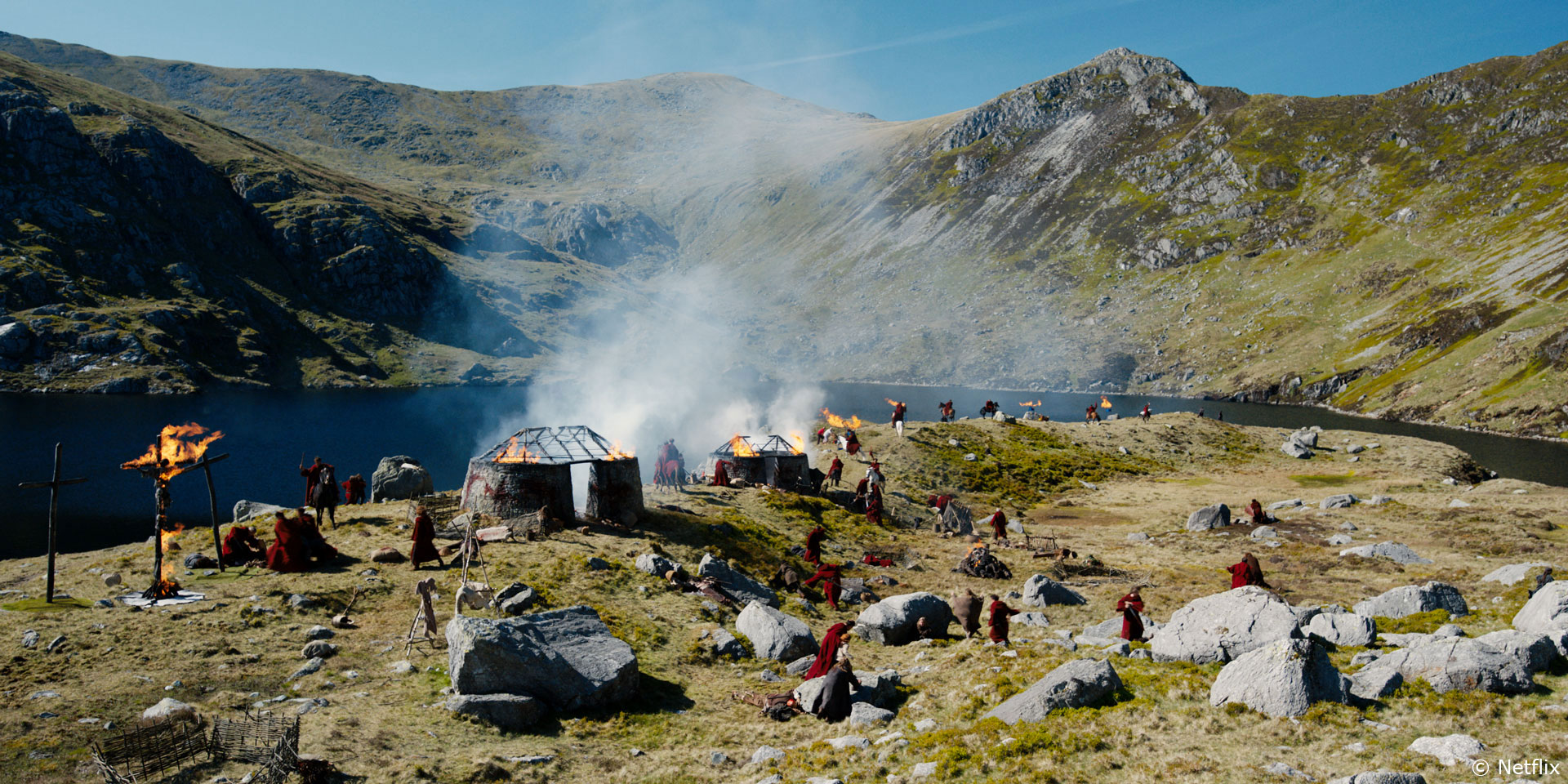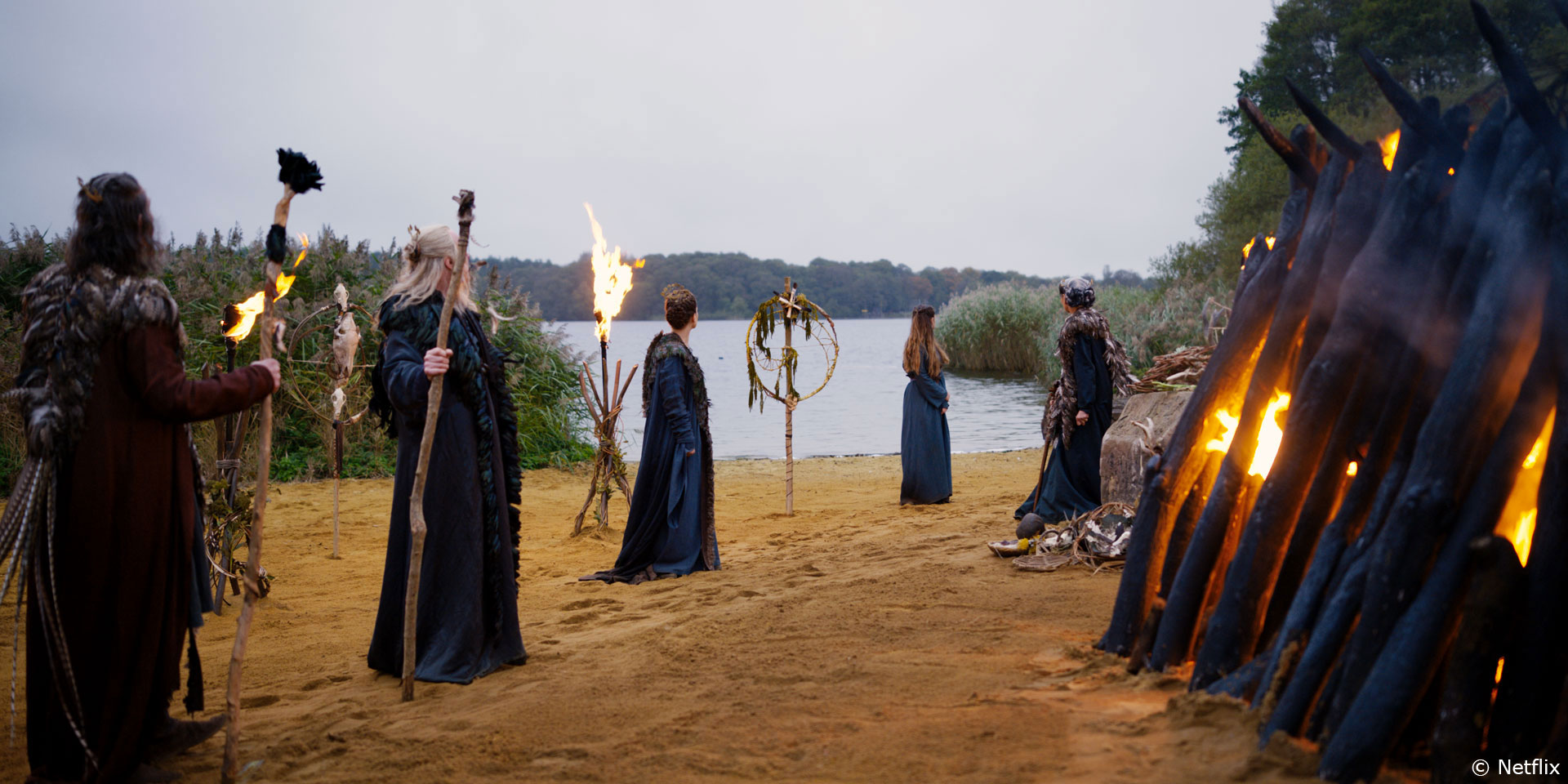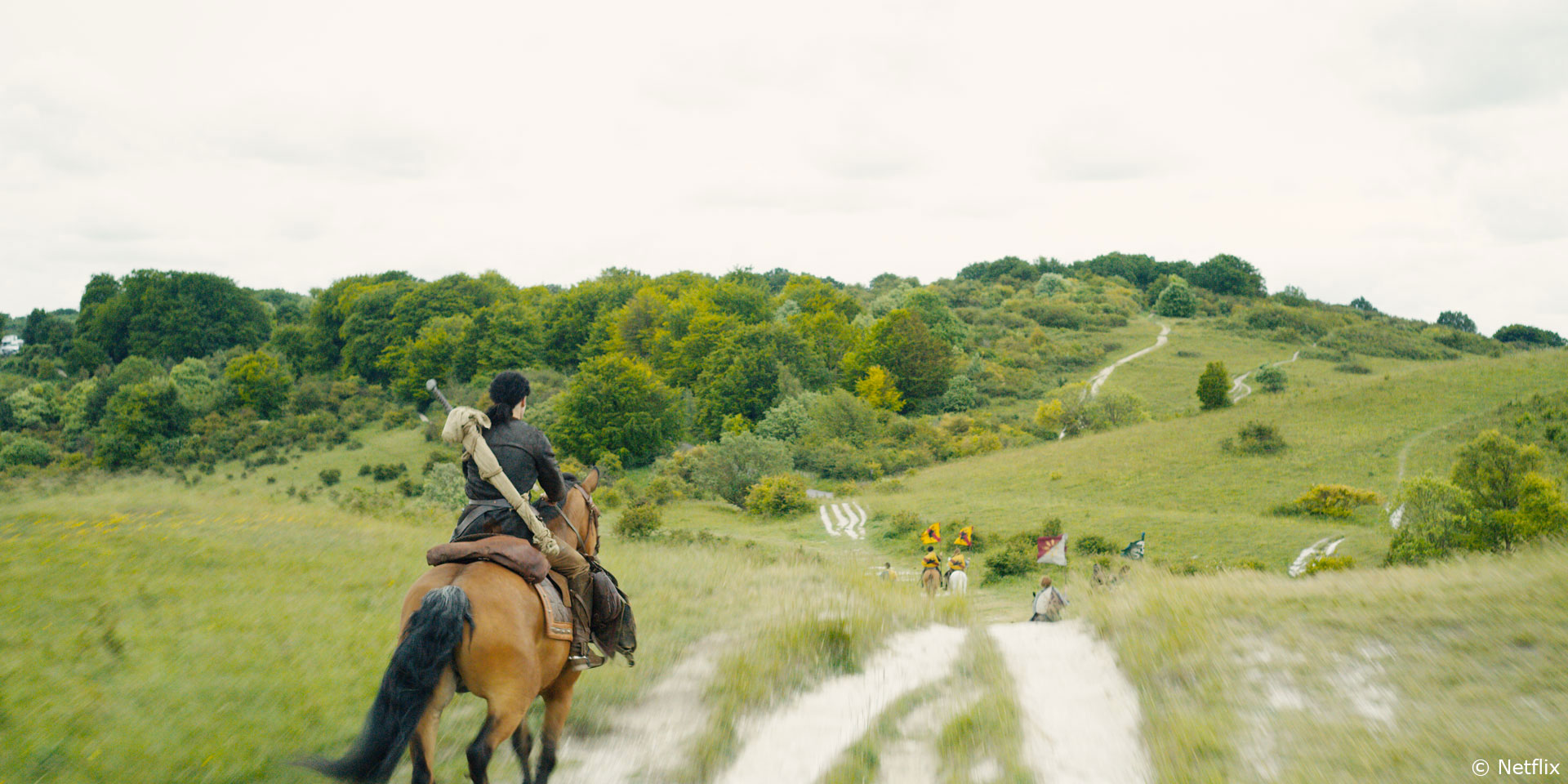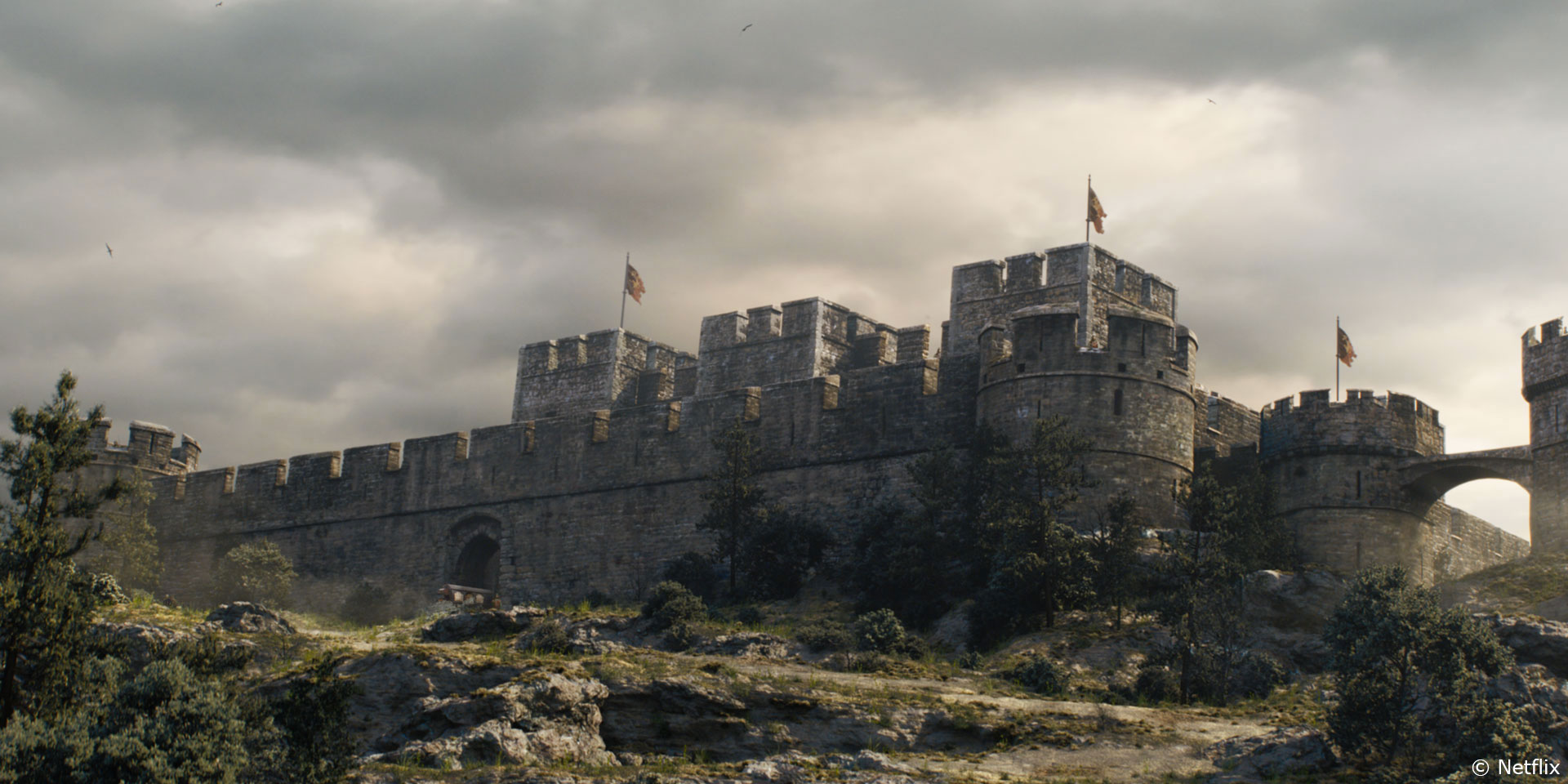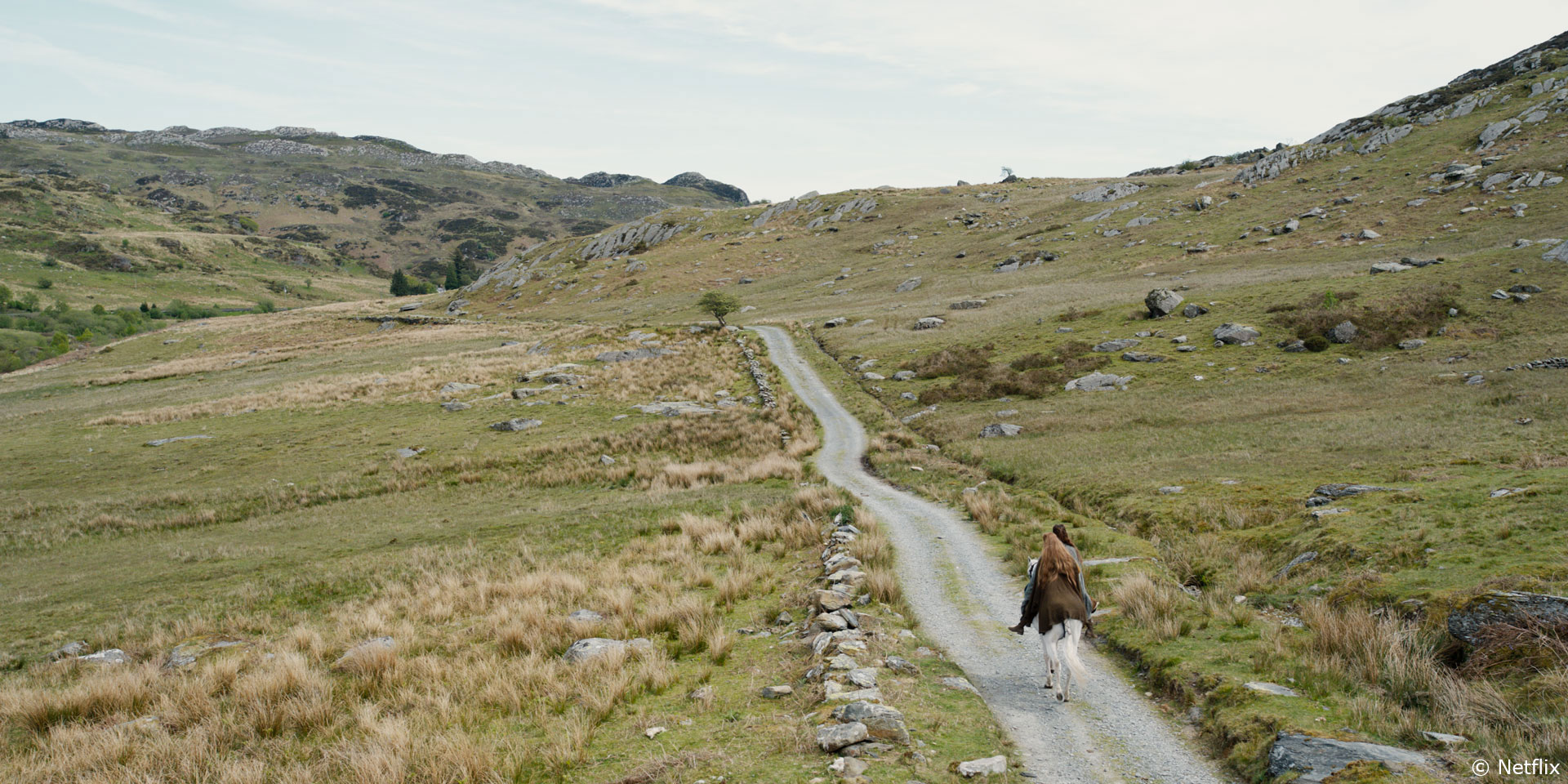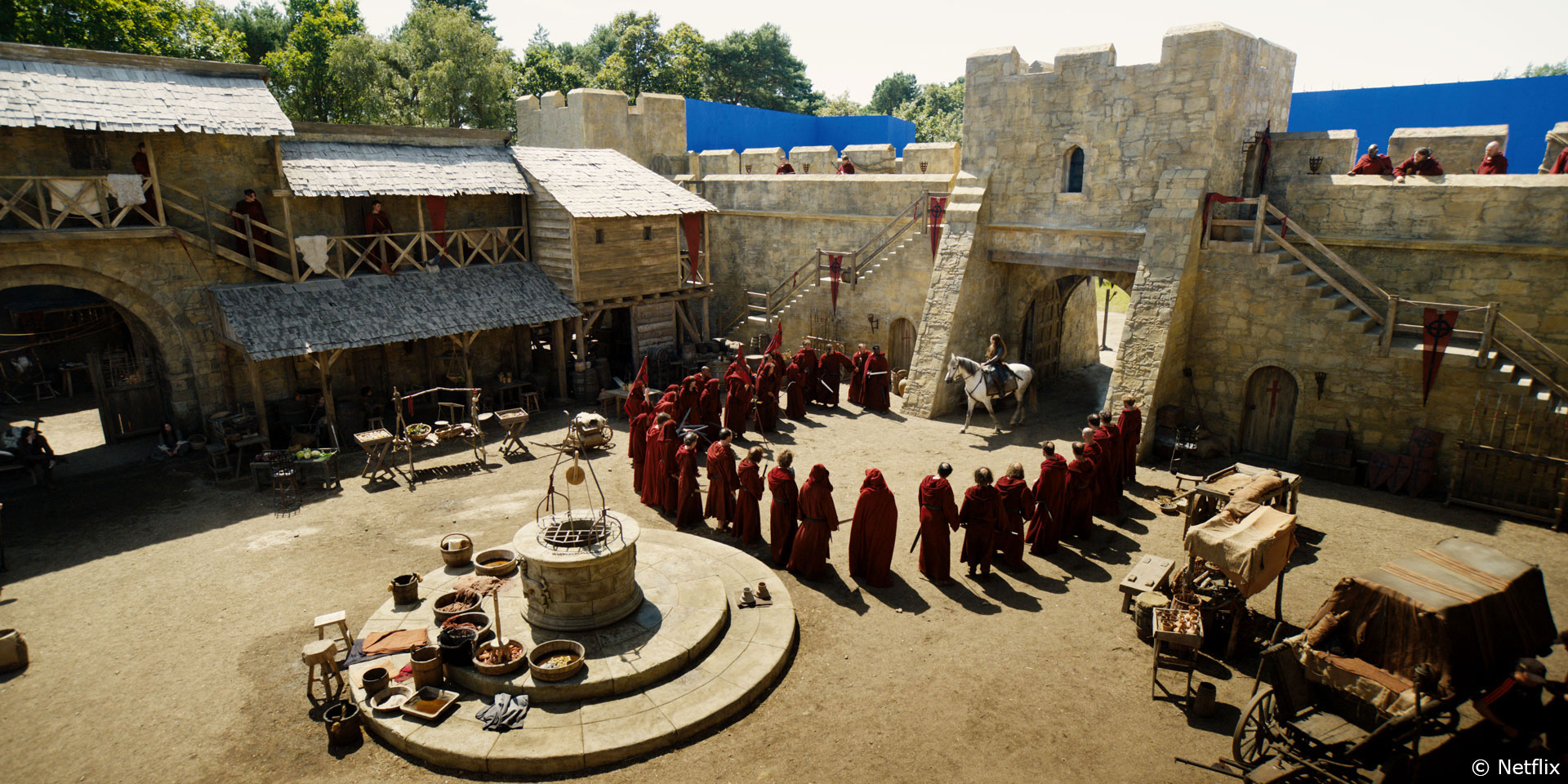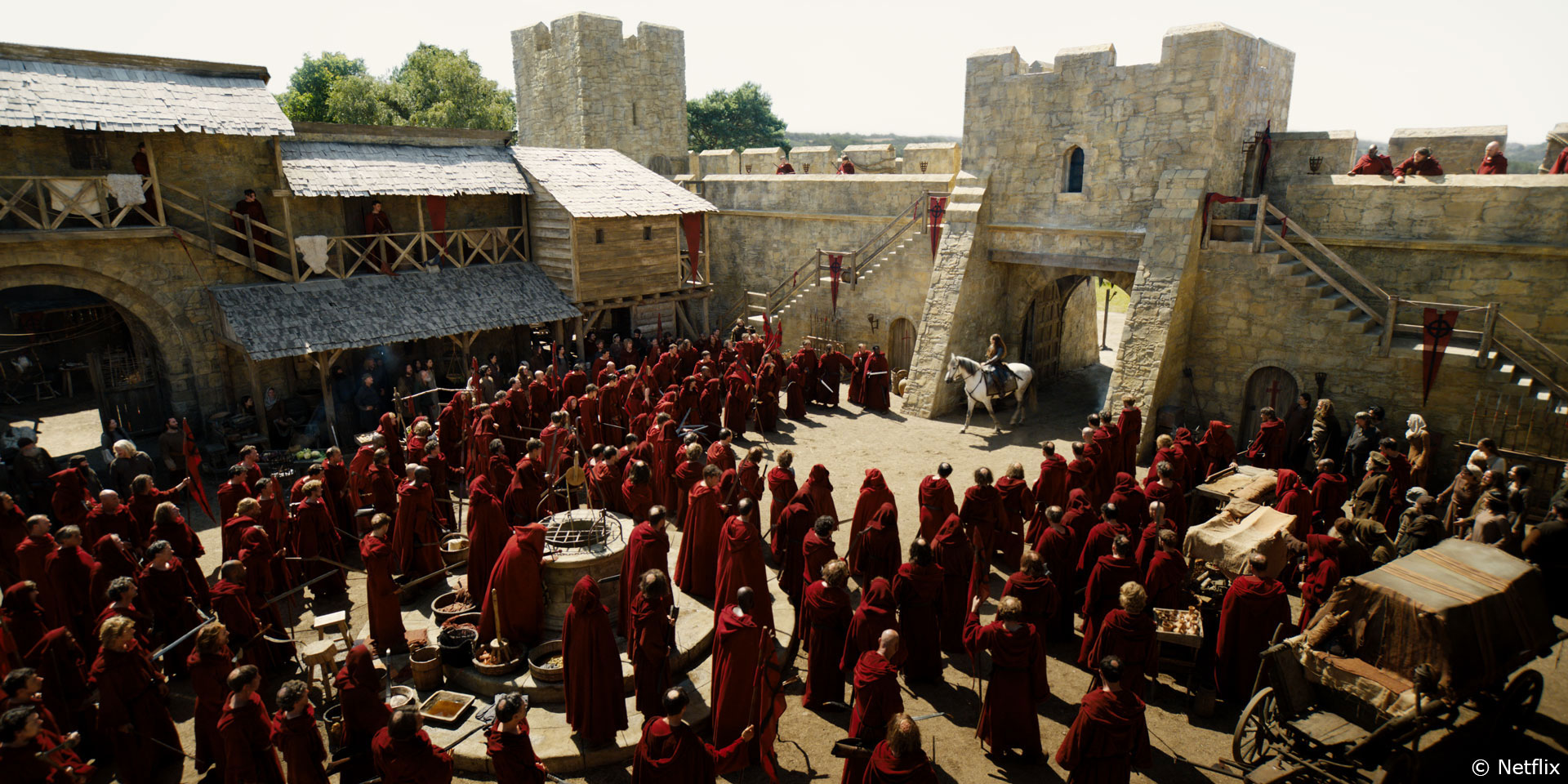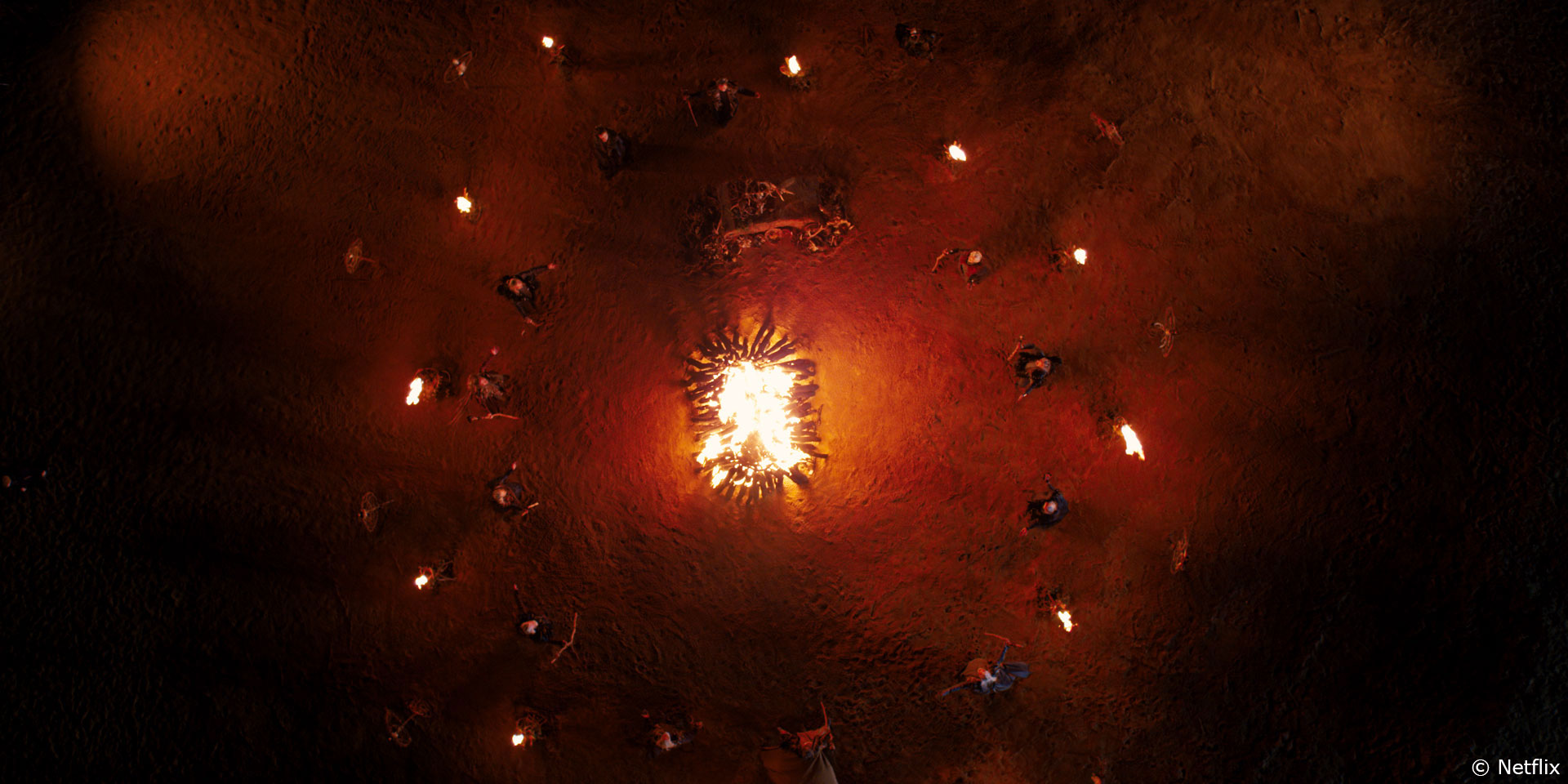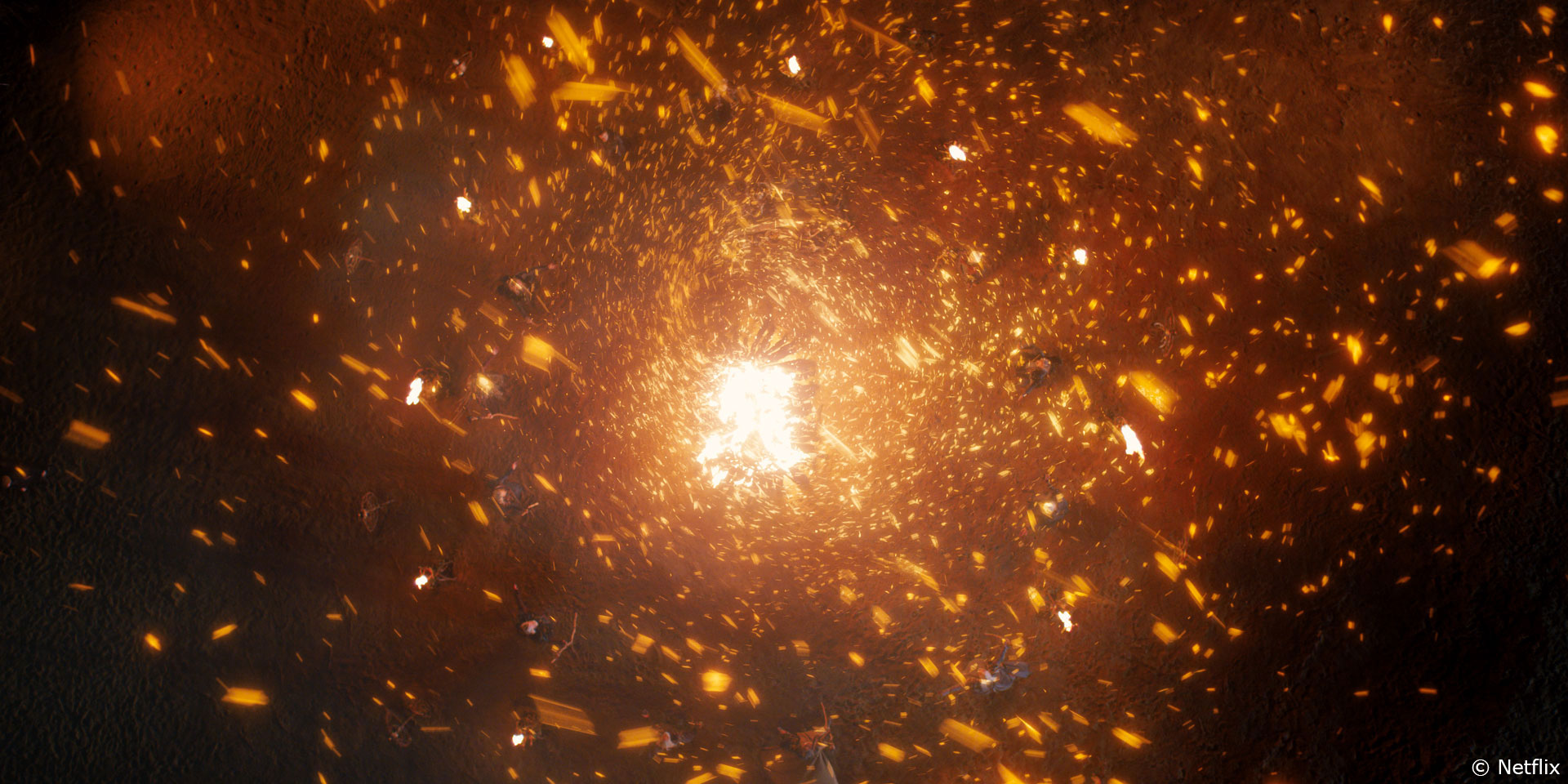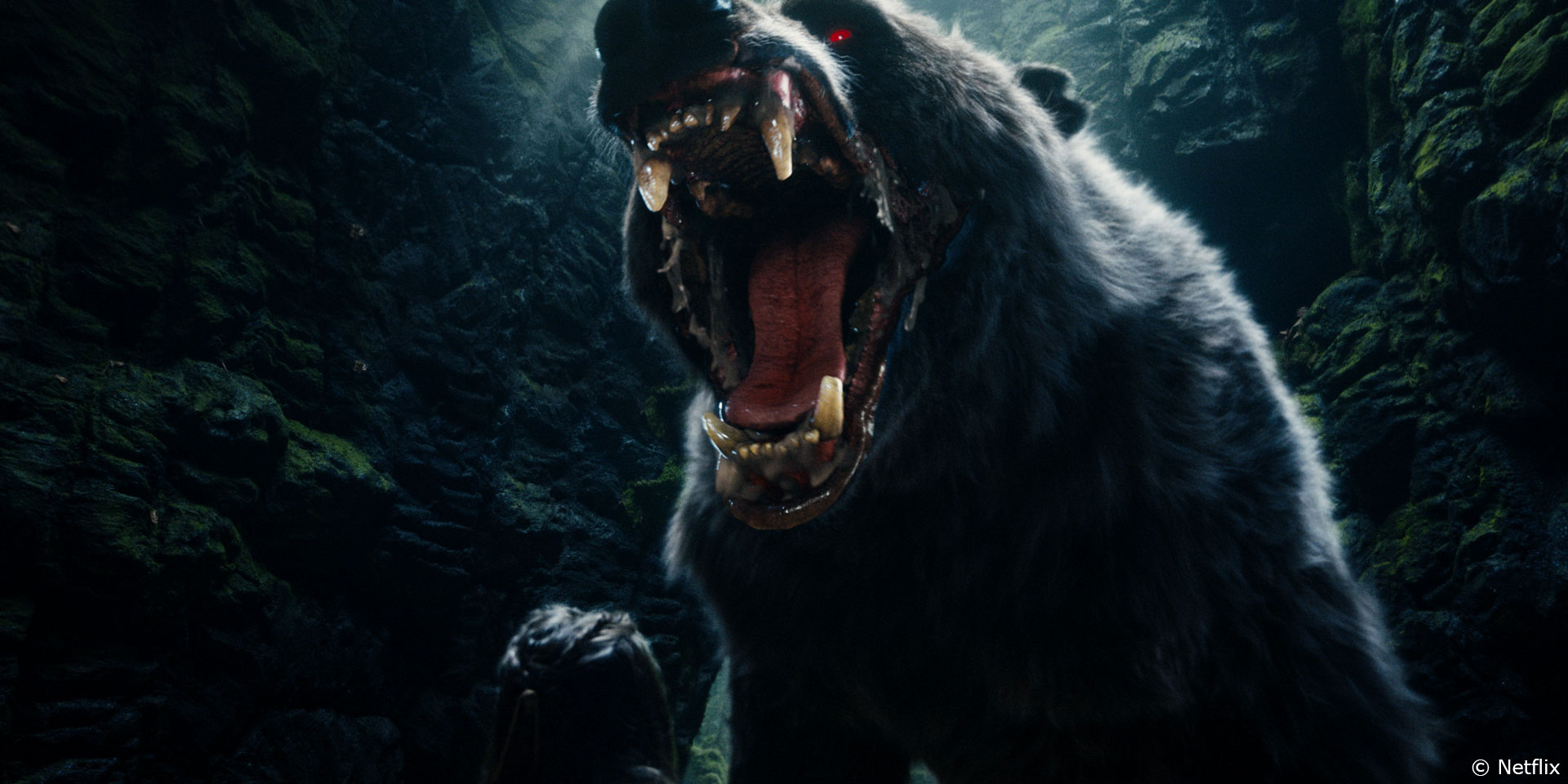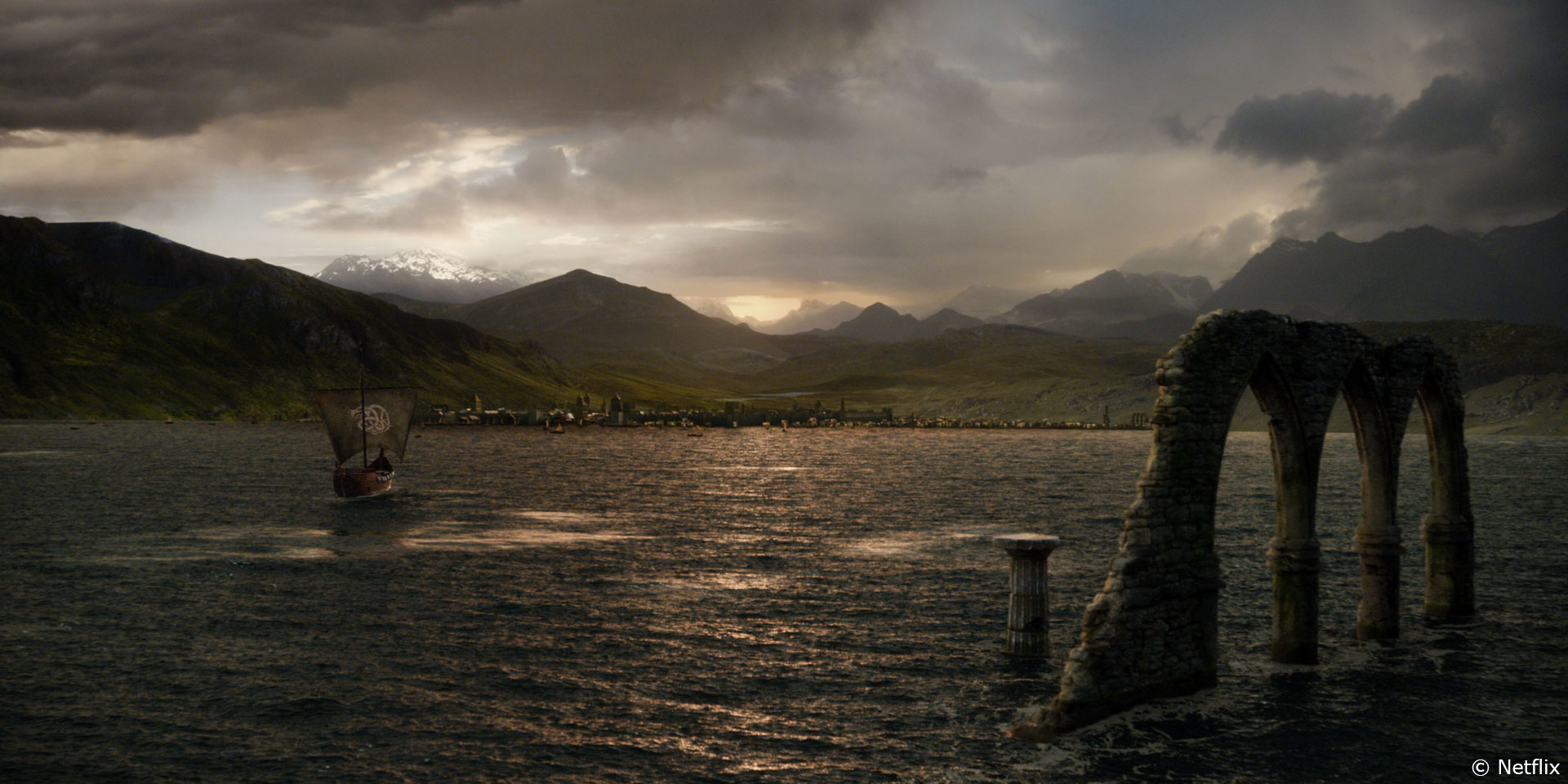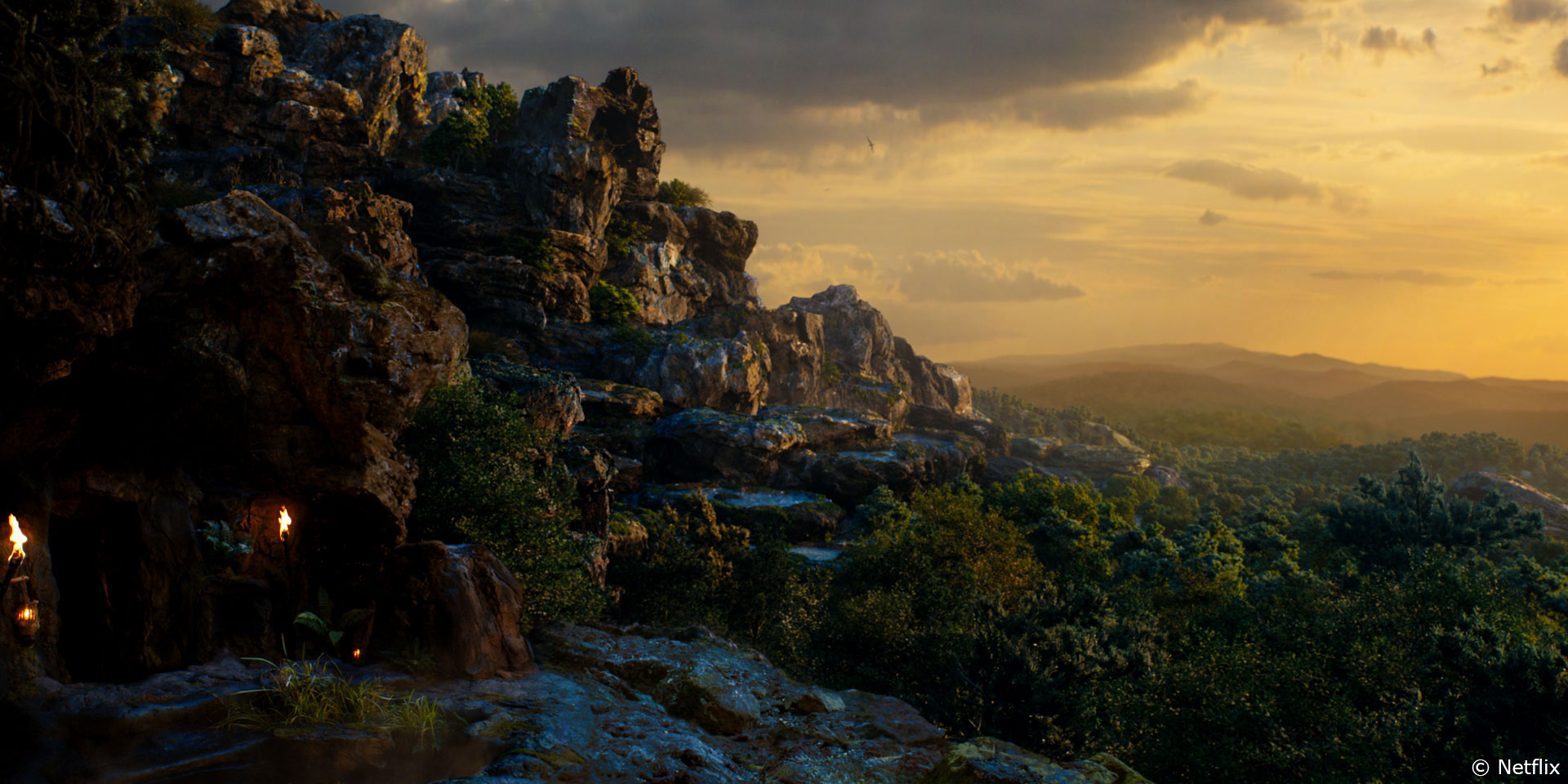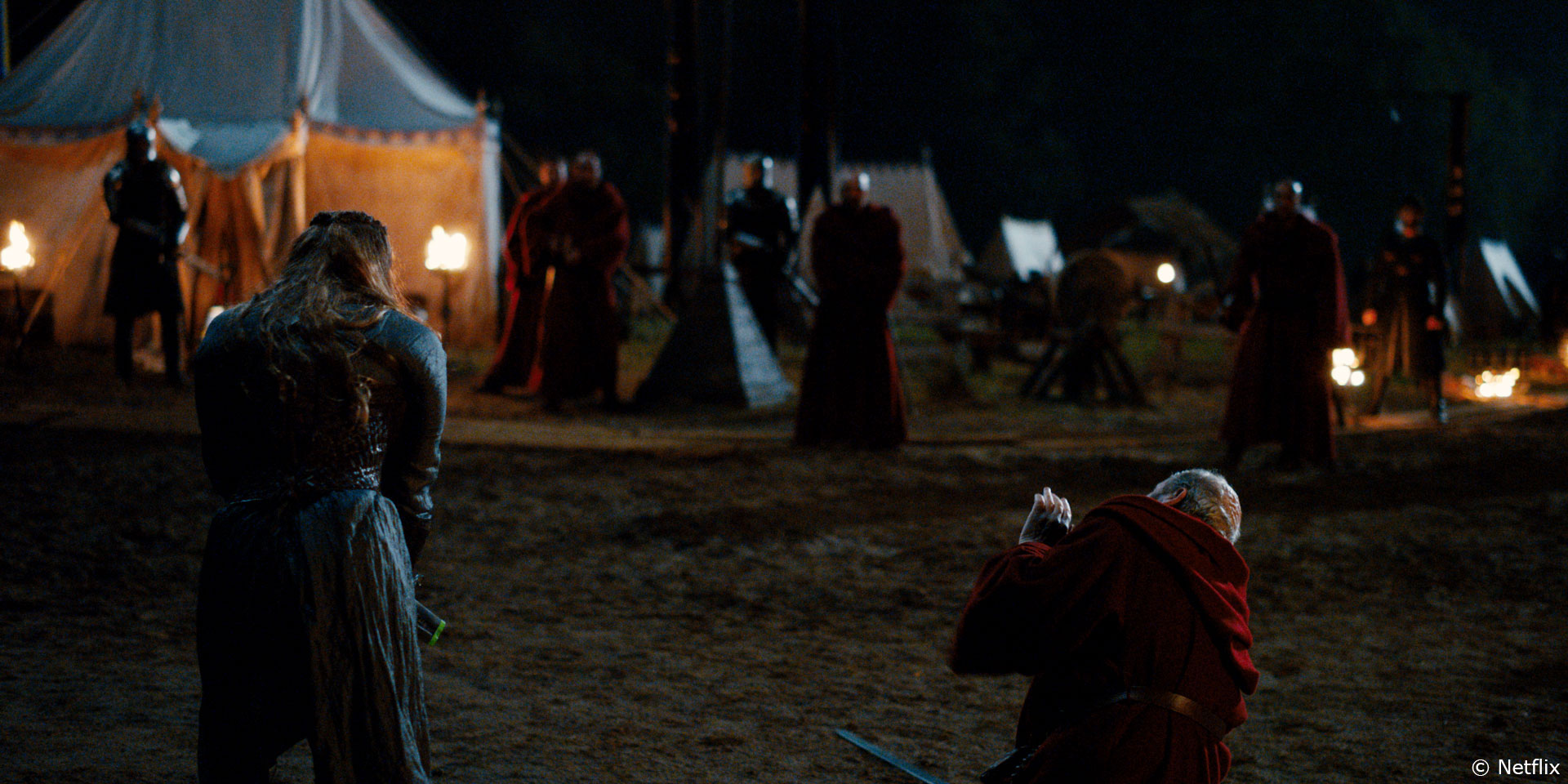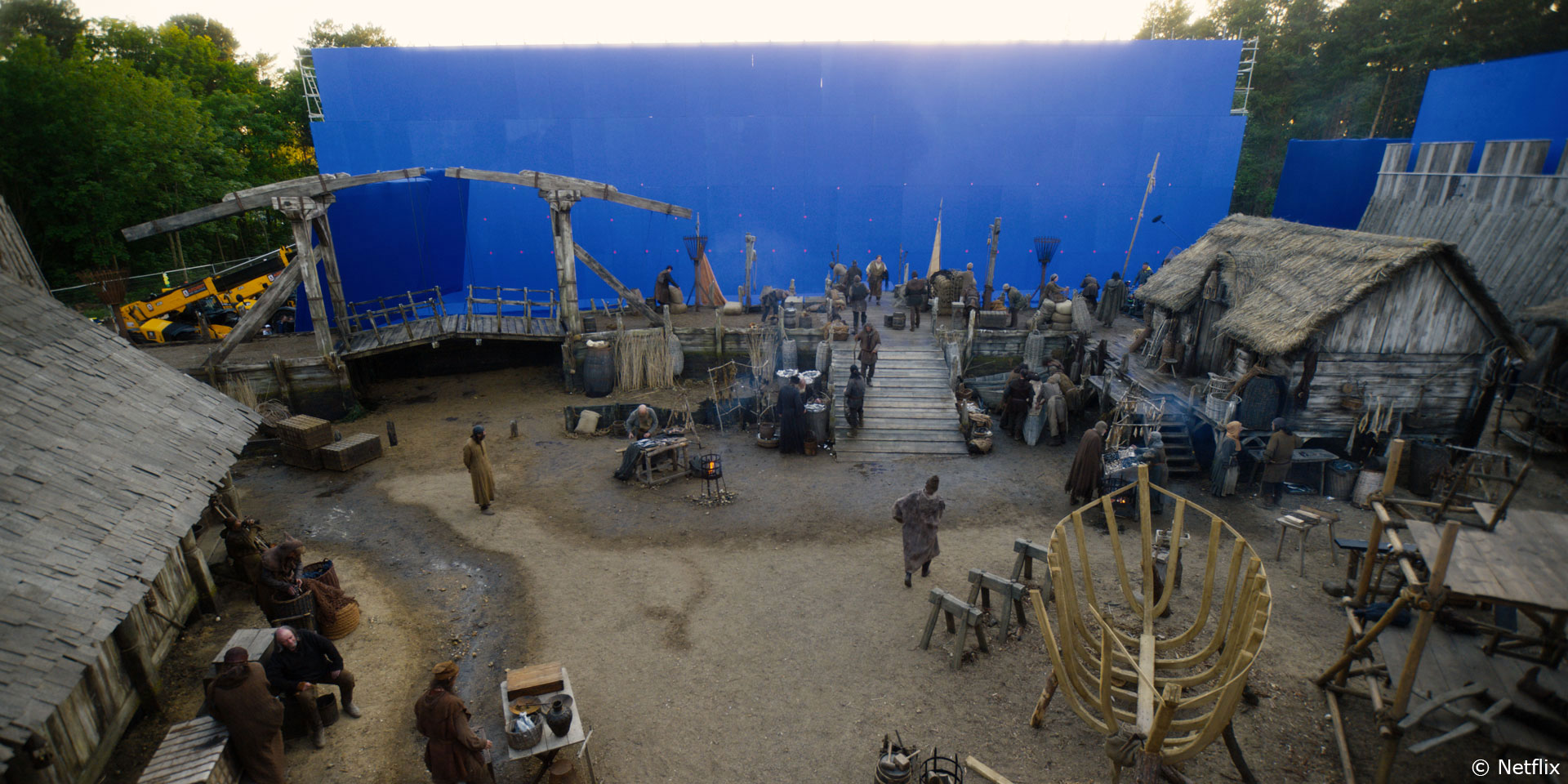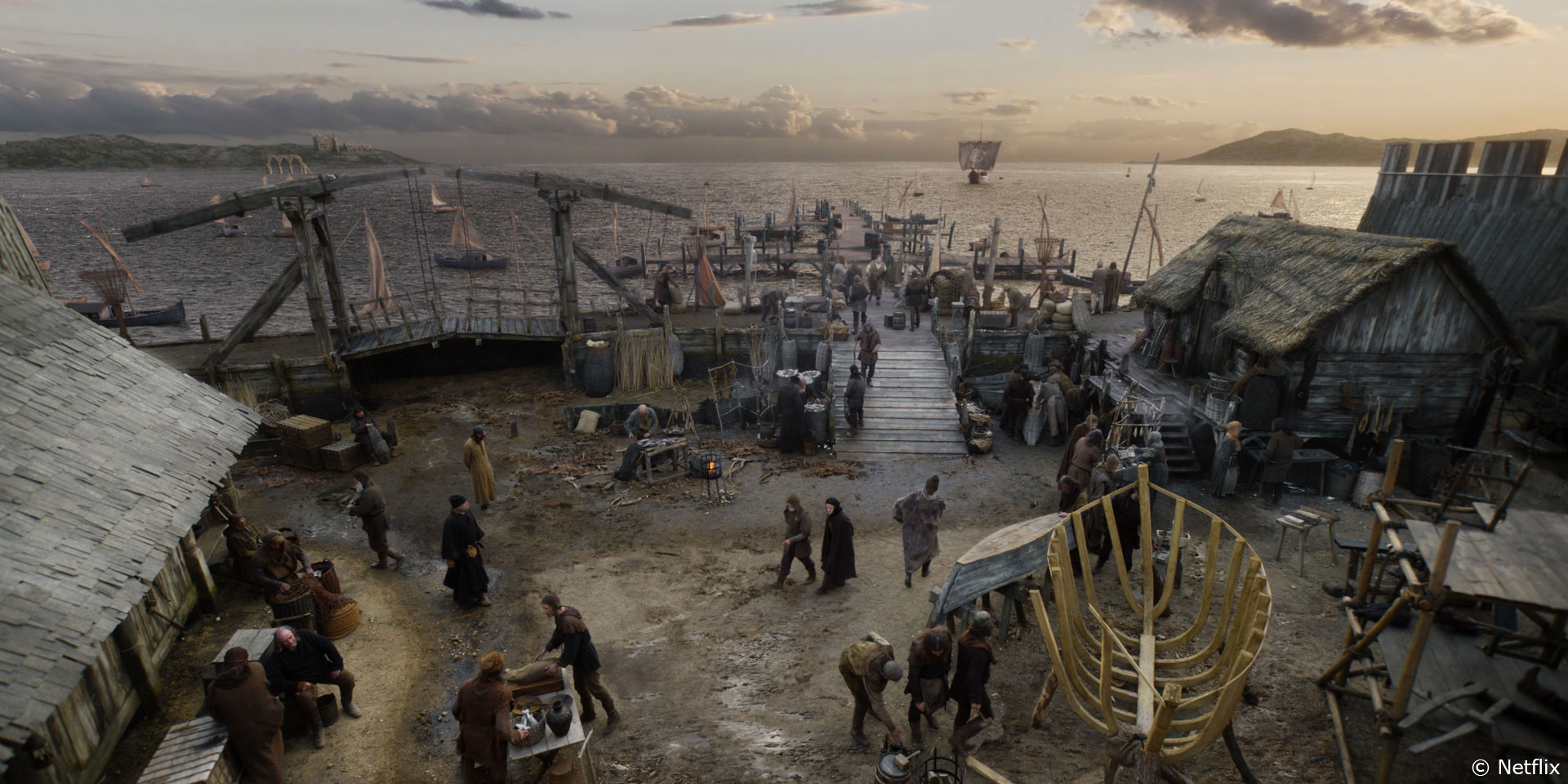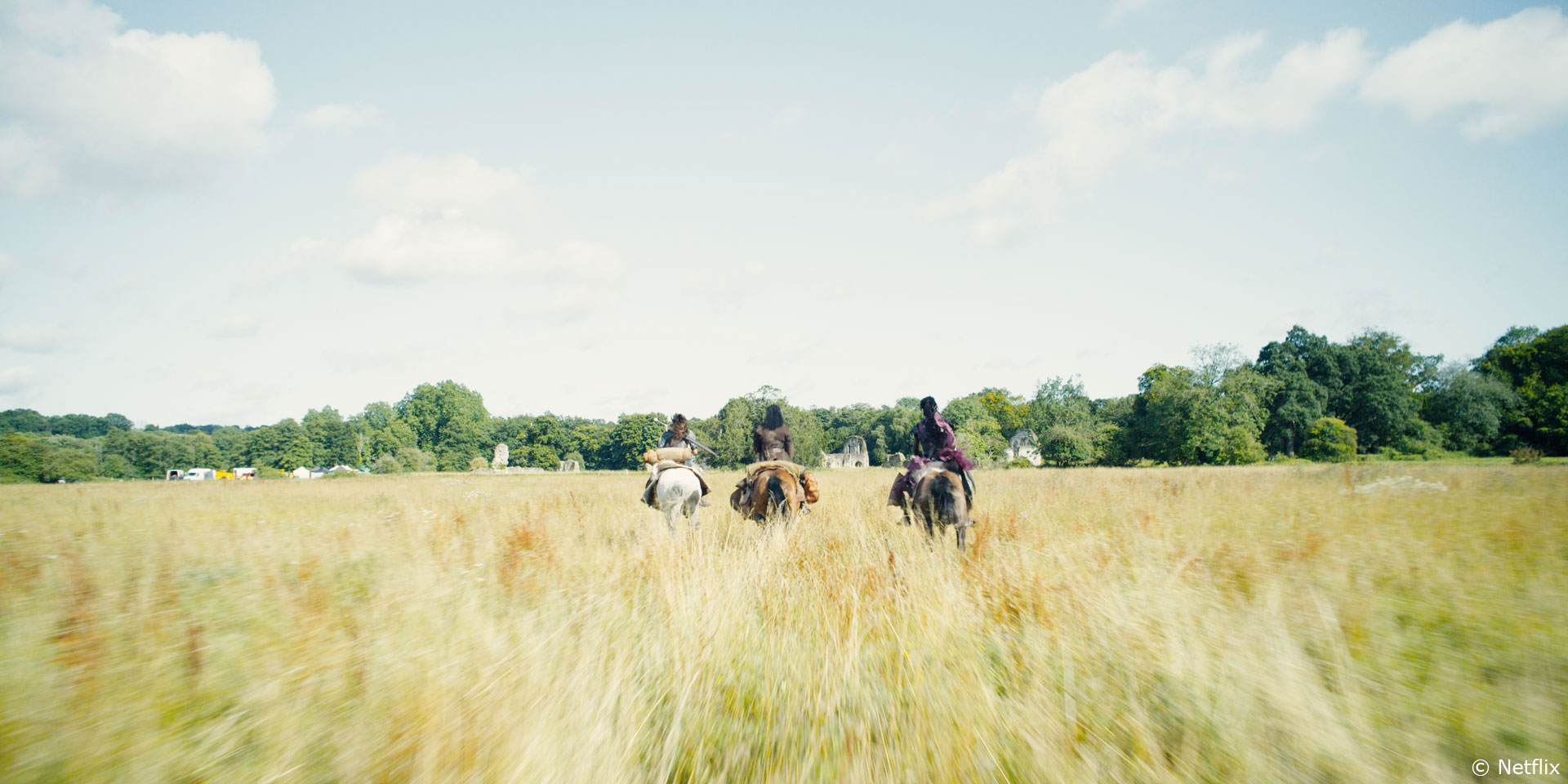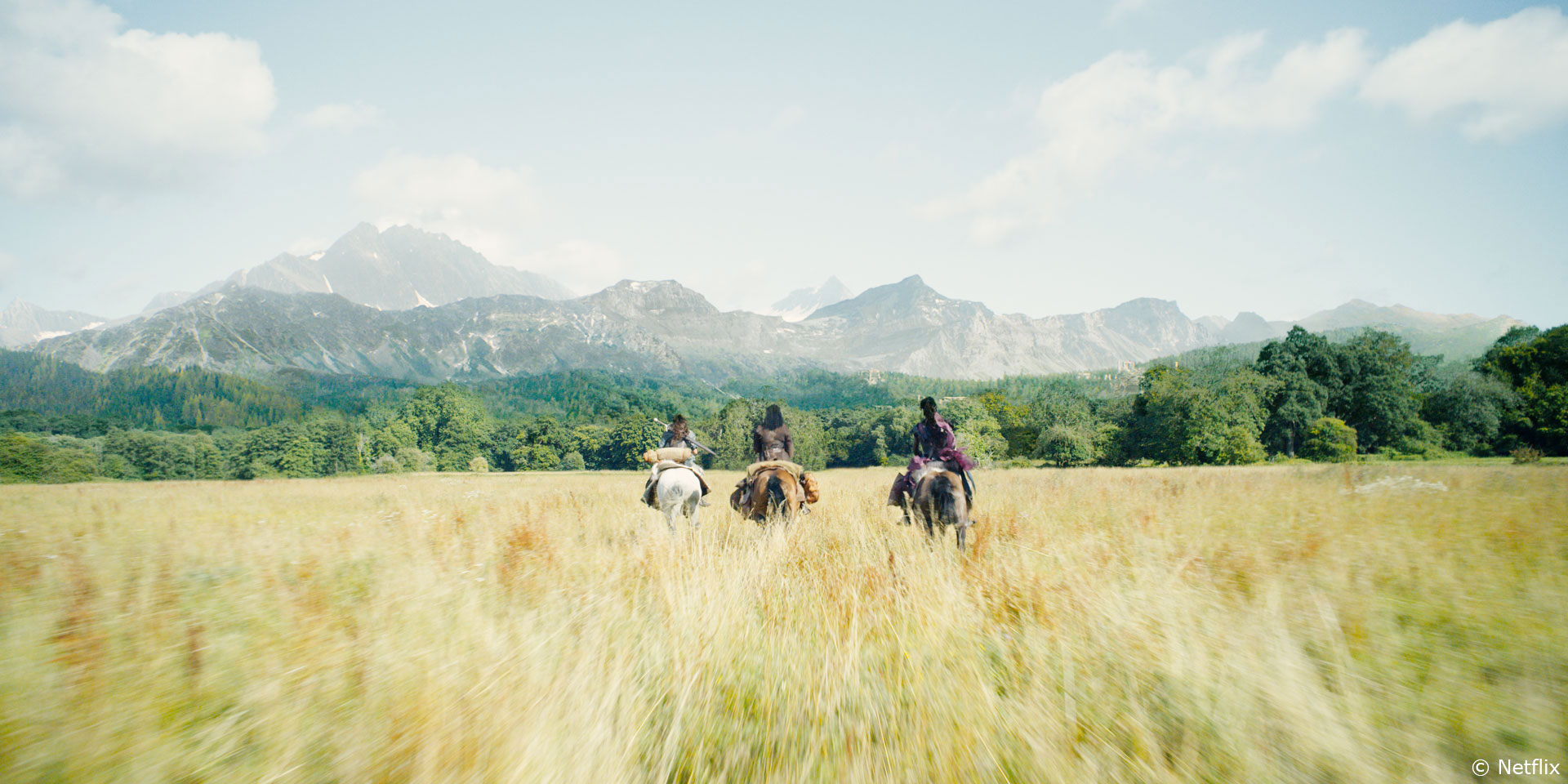David Sewell began his career in visual effects with INDEPENDENCE DAY. He then worked in various studios such as Cinesite, The Senate and DNEG. He has worked on many shows including WORLD WAR Z, JOHN CARTER, IN THE HEART OF THE SEA and CHERNOBYL.
What is your background?
I started in the industry in 1996 (what? when!?!) – demonstrating on computers made specifically for visual effects. I think they ran on steam. It was for a company called ‘Quantel’. I am now an On-set and in-house VFX Supervisor.
How did you and DNEG get involved on this show?
I moved from film to episodic work in 2015. DNEG TV formed relationships with larger networks like Netflix, working on higher end TV shows like CURSED.
How was the collaboration with the Showrunners and VFX Supervisor Dave Houghton?
Dave was great. Very inclusive from the start. Allowing us direct communication with Tom Wheeler (showrunner) and Frank Miller (exec producer). This hugely helped the creative side of the work. DNEG also helped cover a lot of the 7-month shoot, supervising our own sequences.
What was their expectations and approach to the visual effects?
We were awarded work based on DNEG TV’s experience on previous shows. This gave the clients some confidence but also high expectations. The producers and showrunners were involved in each step of the process and it worked well!
How did you organize the work with your VFX Producer?
These shows are not (always) shot episodically so we had to organise the work episode by episode back at DNEG. We first delivered the builds of the biggest assets – creatures like the Demon Bear and environments like Hawksbridge and Grammaire.
How did you split the work amongst you and the DNEG offices?
London built the main assets and setup templates of hero shots. Mumbai and Chennai took these looks for majority of the sequences. Montreal were also a big part of the work, picking up whole sequences themselves.
What kind of references and indications did you receive for the environments and the magic?
We were given a lot of references by the Art department, Dave Houghton and even some personal work from Frank Miller himself. These were illustrations, storyboards as well as numerous reference images. Really useful for everyone. The fantasy period was a blend of Medieval, Neolithic, Druidic and Classic Roman. However, we also had to be true to the show’s strong look already in place from the production set builds.
Hawksbridge was based on an ancient Roman city that had crumbled and been rebuilt in medieval times with a mixed Druidic style in there too. We added a river running through the city going out to the sea, with the entrance overlooked by 2 100ft stone statues. The statues didn’t make the cut though.
Nimue is from Dewdenn, which is a small village made of mud and straw huts. We extended the 10 huts into a further 10 that we extended into the forest. Beyond the forest we indicated to a world of much larger Druidic stone buildings and sculptures. Mayan temples were given as reference. Then beyond the lake Dewdenn is next to is a 180 degrees high mountain range.
So yes, a lot of research was done all the way through the show in order to find the right look.
Where were the sequences with the castles filmed?
The castle at Grammaire was filmed on the set at Deepcut, Surrey.
Could you explain the environments creation in detail?
We would start with the photography; whether it was already shot plates or location stills or our own set references. From here we would build concept stills in Photoshop or Maya to get an idea of the scale and style of what the clients were after. We always tried to keep some grounding in reality. Even if the final result was quite conceptually different.
For example, in Grammaire, Ectors castle started off very loosely based on Leeds Castle. Even though the final result looks nothing like Leeds Castle, there are plenty of photographic references we can now use to make Ectors Castle look real.
Can you elaborate about the creation and animation of the magic effects?
DNEG TV did a few magic effects throughout the show. In the first episode we see the embers from a funeral pyre come alive and choose Nimue as the next ‘Queen’. This involved our FX team firstly matching a simulation of the real embers shot, then producing a seamless takeover to animate the embers. They needed to divert the direction into a large whirlwind in the sky that then reduces down into a small whirlwind that circles Nimue. We added interactive lighting from the embers onto the body using roto-animated body geometry.
Can you elaborate on the impressive bear?
The Demon bear was one of our biggest challenges on the show in terms of a creature asset. In the second episode the bear corners a young Nimue in a cave, towers over her and over extends his mouth; enough to eat her head and torso in one! We worked in the concept stage for quite a few months. Early concepts leaning more towards the horror, with mangled skulls and mangy fur. But this was felt to be too much. The production was after a 80/20 split of real bear and fantasy.
We started with a basic model of a brown bear, increased the scale from 8ft to 12ft (when standing), sculpted in Z-Brush larger paws, enlarged teeth and an over-extended jaw. Based on snake reference the rig for the jaw was built to dislocate and extend. Finally, we gave it red demonic eyes with small black pupils, because as Frank himself says; ‘pupils show intelligence and you’re more scared of an intelligent monster than a dumb one.’ The animation needed to portray the heavier mass but still be able to move fast enough in a frantic attack – like a 12ft Sumo wrestler. Kind of.
How did you create his fur and eyes?
The groom was done in Houdini
How did you simulate his presence on-set for the cast and crew?
Someone from the stunts team kindly volunteered to dress in the green morph suit and carry the tennis ball / stick (to appropriate height for eyeline). The young 5-year-old actress playing Nimue did very well to pretend to be scared and not laugh (unlike the crew)!
Can you tell us about the ocean and the boats?
Our basic smaller boats were variants of the 2 small boats on set. We then created further variants based on medieval fishing boats. We created 2 larger Galleons, and a large Viking Galleon for Pym and the Vikings scene. The water was simulated in Houdini then brought into Maya for the boats and ships layout and the interaction with the waves.
Can you tell us more about the FX work on the water?
For the shot of the Viking Galleon that travels in close up to camera we used a combination of an FX simulations in Houdini, based on some live action library footage of the right kind of sea. We could then blend the two elements for depth; foreground to background and above and below the water. The simulations were then brought into Maya to work with the Galleon and rendered out as separate elements for control in the composite.
Which sequence or shot was the most challenging?
It has to be the scenes in episode 5, of Nimue and Arthur in the ‘natural’ steam pool on the edge of the mountain. It was shot with a tricky light setup (multiple sources) with a shallow depth of field, which is quite the opposite of the real-world scene. A lot of roto, specific area grading and steam (!) helped us through it. It is a deep and meaningful sensual scene between the actors/ characters and quite a bit of concept work went into finding the right balance between a boring hillside and a front cover of a tourist magazine.
Is there something specific that gave you some really short nights?
Edges! Best ways to fix edges! Those damn edges! Edges, edges, edges. Now you’ve made me remember the edges!
What is your favourite shot or sequence?
There were so many! Some of the painted environments were stunning. The animation on the floating flowers was really nice. The bear sequence really worked for me. But I always did like the body slicing of Commander Vallus in episode 8. He gets sliced in half at the waist by Nimue with the Excalibur sword. This was a tricky shot. Defying anatomy, biology, physics and generally all reality! Sickly fascinating trying to make it believable. I think the final result looks good.
What is your best memory on this show?
Sounds cheesy, I know, but I’m going to say it – it’s the people! It’s the people I met and worked with, both on-set and in the office. Unlike a lot of other industries, ours can be very transient and despite working on the show for over a year, I may never work with a lot of these great people again. Seems sad but I also have good memories!
How long were you working on this show?
From about February 2019 to March 2020
What’s the VFX shots count?
822 beautifully crafted shots of genius.
What was the size of your team?
As with most shows the crew size fluctuated based around the delivery schedule.
Roughly 30-40 in London, 20 in Montreal and between 40 and 60 in India.
What is your next project?
THE WHEEL IN TIME. An adaptation of 14 books by Robert Jordan. A similar (but different!) medieval fantasy.
What are the four movies that gave you your passion for cinema?
For VFX;
STAR WARS (oh my god that’s a flying space fighter!)
JURASSIC PARK (oh my god that’s a DINOSAUR!)
E.T. (is that an alien flying in a bike basket in front of the moon!?)
INDEPENDENCE DAY (my first VFX shots in a film)
For ‘normal’ films;
MOON
THE BIG LEBOWSKI
SEXY BEAST
TWIN TOWN
A big thanks for your time.
WANT TO KNOW MORE?
Netflix: You can watch CURSED now on Netflix!
DNEG: Dedicated page about CURSED on DNEG website.
Dave Houghton: My interview of Overall VFX Supervisor Dave Houghton about CURSED.
© Vincent Frei – The Art of VFX – 2020


